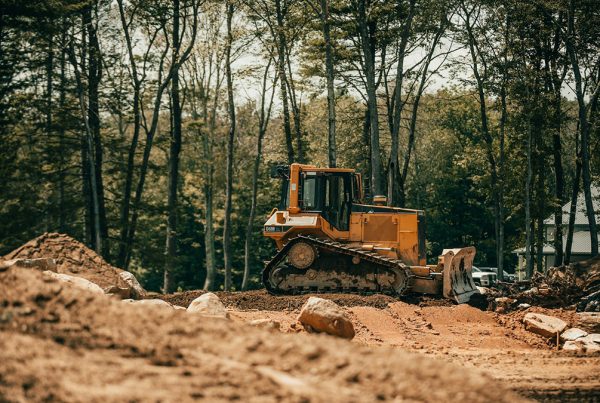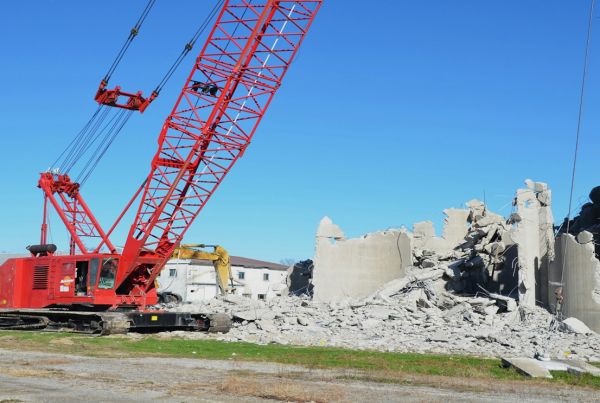Communication breakdowns on construction sites almost always lead to something negative, including environmental harm. Many firms rightfully focus on the connection between miscommunication and safety. However, the correlation between poor communication and ecological degradation is more impactful in the grand scheme of things and deserves as much attention. Break barriers to effective communication in construction to avoid these undesirable consequences.
Increasing Virgin Material Extraction
Communication failures are responsible for 48% of rework on all construction sites in the United States. They stem from design errors, manual layout processes and fear of blame.
Electrical, mechanical, plumbing and drywall layouts can have incomplete or inconsistent information. Such discrepancies guarantee rework when undetected and unaddressed during the initial stages of construction.
Individual trades manually measuring and marking layouts are prone to human error. Even worse, guilty parties may resort to pointing fingers and refuse to admit fault when misalignment occurs.
Regardless of the reason, rework is a profit-draining and environmentally damaging undertaking. The construction industry already accounts for 40% of raw material consumption globally. Rework artificially inflates the demand for virgin resources, compelling mine and quarry owners to ramp up production.
The environmental impact of construction rework would have been less of a concern had most supplies on the market been reclaimed, repurposed, recycled or reused. Unfortunately, only 8.6% of extracted materials get new leases on life.
Generating More Waste
Miscommunication-driven rework generates mountains of solid waste. Many types of debris are recyclable. The problem is even the most environment-conscious construction companies still send 12% of their demolition waste to landfills.
Rework may be part of the gig. Still, construction managers must take steps to minimize it. Adopting BIM, hiring competent workers, investing in quality PPE, using clear, simple language at job sites and paying for construction software subscriptions are tried-and-true methods.
BIM boosts collaboration among key construction stakeholders, including property owners, architects, engineers and contractors. Its stellar visualization capabilities reveal significant design errors and encourage relevant parties to fix problems from the start.
A crew of competent workers is adept at spotting and addressing workplace hazards, reducing the chances of wasteful rework due to miscommunication. Qualified laborers have a keen eye for issues with site conditions, conduct regular equipment maintenance by the book and do what it takes to comply with OSHA guidelines. These employees usually have stellar communication skills to become excellent safety trainers.
Solid protective gear helps safeguard workers from developing hearing impairment. Laborers with healthy sets of ears can find it challenging to understand each other due to noise pollution. Loss of hearing increases the chances of miscommunication at work.
Comprehension challenges can lead to rework-requiring blunders. Widespread use of jargon can be counterproductive because only some employees are familiar with most technical terms. Using words everybody understands can ensure clarity and understanding among crews with nonnative English speakers.
Construction software programs can eliminate administration errors. Closing the technological gap can ease communication between project managers, allowing decision-makers to learn about causes for concern early.
Burning More Fossil Fuel
Poor communication among crew members can result in prolonged vehicle idling and unnecessary transportation of people and goods on-site. Most construction vehicles are diesel-powered, so running them inefficiently releases more greenhouse gases into the atmosphere, contributing to climate change. They’re also notorious polluters, so operating them only when necessary matters to help keep the air fresh and healthy.
Electrifying heavy machinery — such as rope shovels and utility vehicles — is the most logical way to decarbonize everyday construction activities. Alternatively, living by lean thinking principles can help reduce fuel waste. Lean thinkers constantly find ways to manage teams efficiently. They ensure everybody’s on the same page to discourage time-wasters and operate construction vehicles in ways that impact the environment the least.
Lean-thinking construction managers may also adopt autonomous technology to reduce the project’s carbon footprint, eliminate pollution and reduce the chances of miscommunication.
Remotely controllable electric vehicles need just one or two operators. Communication problems are less likely to occur when a task involves fewer people. Operating zero-emission semi-autonomous construction machinery from a convenient location can translate to greater efficiency.
Disturbing Wildlife
Mother Nature hates project delays as much as property owners, construction managers and contractors. Loud noises, exhaust from earthmovers, clear forests, light pollution and the constant presence of humans drive away wildlife. The more instances of miscommunication on the site, the more time it takes for construction work to complete — and the later ecosystems can recover.
Nature has a way of repairing itself without human intervention. After a construction project finishes, vegetation will sprout before long to attract various creatures to build a new biological community.
The only problem is the environment needs time to return to good health. Human intervention can accelerate recovery through regenerative architecture and post-construction restoration strategies such as cleanup efforts and reforestation.
Observe Effective Communication in Construction
Construction projects inevitably harm nature. It’s imperative to minimize their impact whenever possible to comply with environmental standards and avoid raising the ire of eco-warriors. Breaking barriers to effective communication is low-hanging fruit. Prioritize them to prevent ecologically damaging rework, reduce waste generation, curb fossil fuel consumption and shorten wildlife disturbance.











